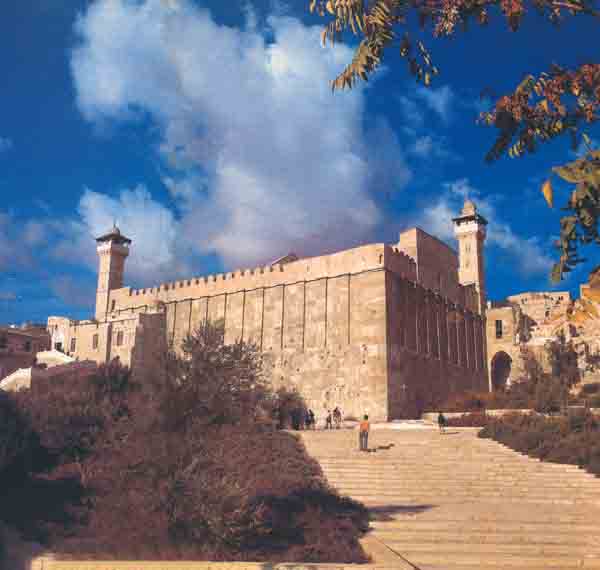Image Details

Garo Nalbandian
Herod the Great (37 B.C.–4 B.C.) constructed this mighty enclosure with his characteristic masonry—finely dressed stones with depressed margins. The upper half of the Herodian walls is interrupted by vertical pilasters, or engaged columns, jutting out from the tightly tatting stones of the walls. Although subsequent rulers wishing to leave their imprints added on to the enclosure both inside and out, it remains today as the only intact Herodian structure. Two of the four minarets erected by Moslem conquerors who seized the shrine from the Crusaders still stand atop the east and west corners. Roof-top crenellations, also a later addition, lend a sense of rhythm that enlivens the rectangular stability of the edifice.
The domed mosque of Joseph, containing his cenotaph, protrudes from the enclosure below the minaret on the left corner. In the Bible (Exodus 13:19; Joshua 24:32) we learn that, in fulfillment of the promise made to Joseph by his brothers, the Children of Israel transported Joseph’s remains from Egypt and buried him in Shechem. But acting on a later Moslem legend that the bones were interred at Machpelah, a 10th-century caliph is said to have ordered an investigation of the area. His workmen came upon a boulder which, when cracked open, was reported to contain the body of Joseph. The caliph then ordered a tomb built over the site to commemorate Jacob’s favorite son.
